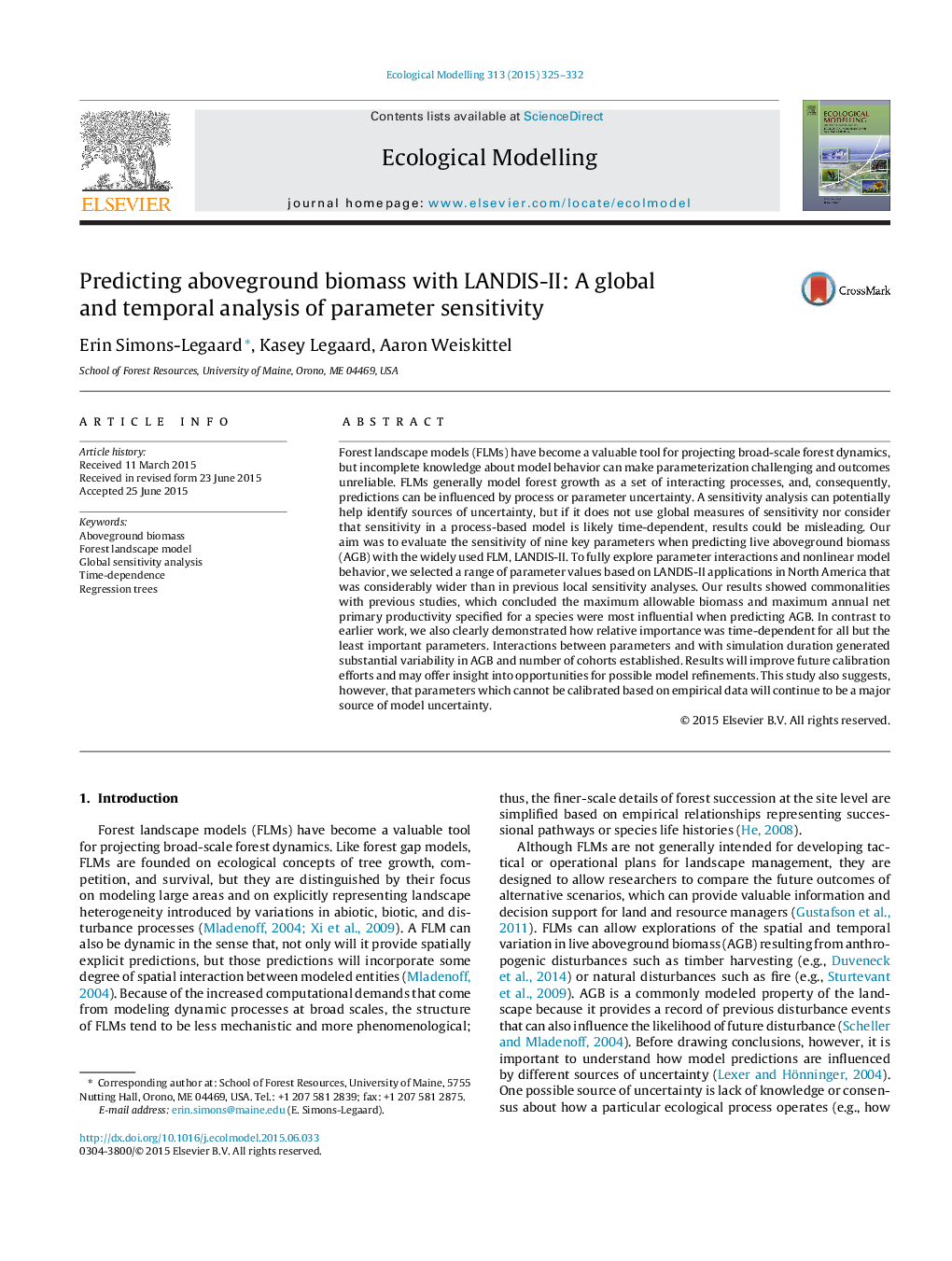| Article ID | Journal | Published Year | Pages | File Type |
|---|---|---|---|---|
| 6296632 | Ecological Modelling | 2015 | 8 Pages |
Abstract
Forest landscape models (FLMs) have become a valuable tool for projecting broad-scale forest dynamics, but incomplete knowledge about model behavior can make parameterization challenging and outcomes unreliable. FLMs generally model forest growth as a set of interacting processes, and, consequently, predictions can be influenced by process or parameter uncertainty. A sensitivity analysis can potentially help identify sources of uncertainty, but if it does not use global measures of sensitivity nor consider that sensitivity in a process-based model is likely time-dependent, results could be misleading. Our aim was to evaluate the sensitivity of nine key parameters when predicting live aboveground biomass (AGB) with the widely used FLM, LANDIS-II. To fully explore parameter interactions and nonlinear model behavior, we selected a range of parameter values based on LANDIS-II applications in North America that was considerably wider than in previous local sensitivity analyses. Our results showed commonalities with previous studies, which concluded the maximum allowable biomass and maximum annual net primary productivity specified for a species were most influential when predicting AGB. In contrast to earlier work, we also clearly demonstrated how relative importance was time-dependent for all but the least important parameters. Interactions between parameters and with simulation duration generated substantial variability in AGB and number of cohorts established. Results will improve future calibration efforts and may offer insight into opportunities for possible model refinements. This study also suggests, however, that parameters which cannot be calibrated based on empirical data will continue to be a major source of model uncertainty.
Keywords
Related Topics
Life Sciences
Agricultural and Biological Sciences
Ecology, Evolution, Behavior and Systematics
Authors
Erin Simons-Legaard, Kasey Legaard, Aaron Weiskittel,
